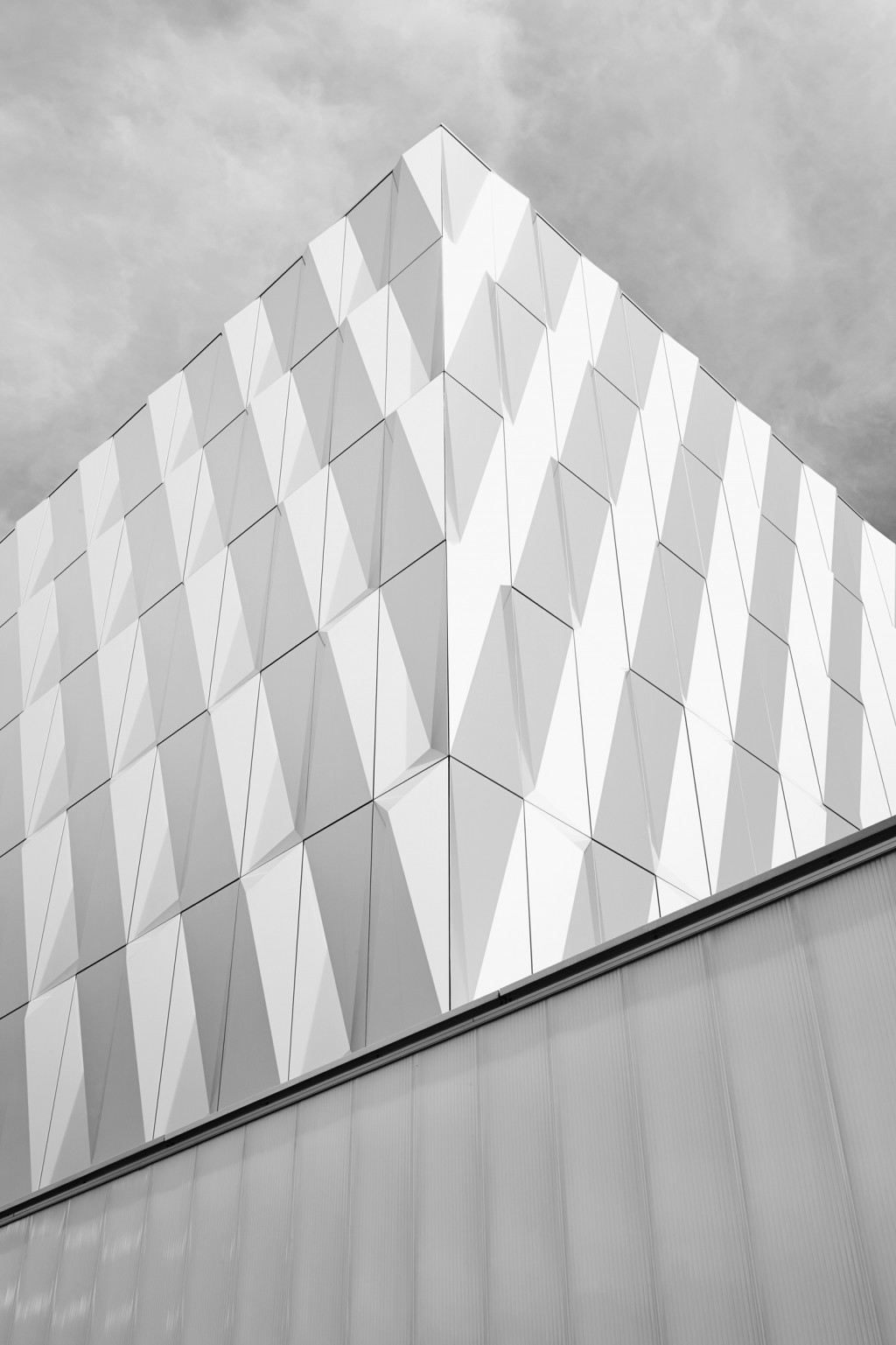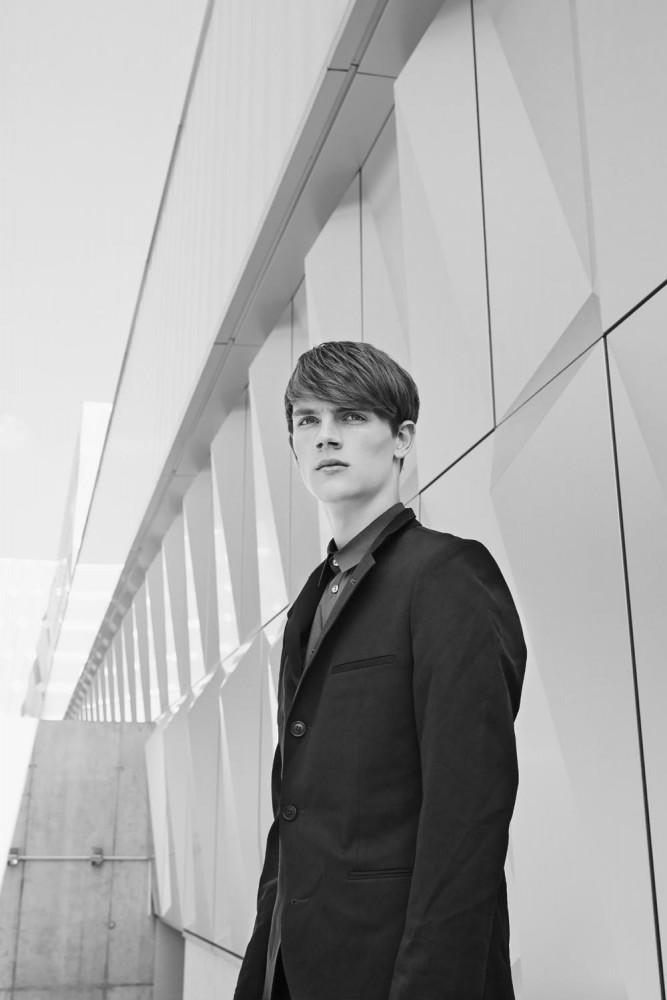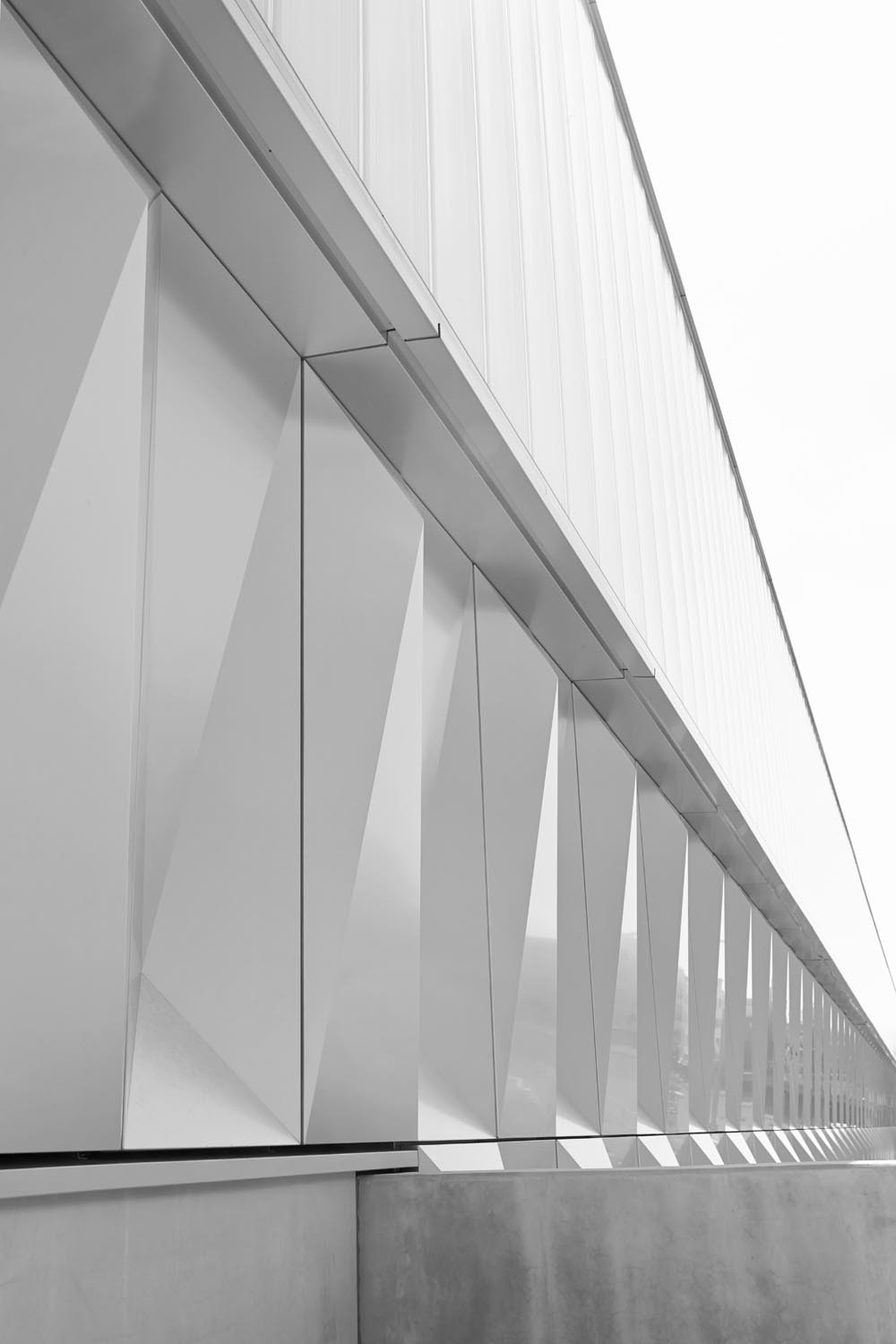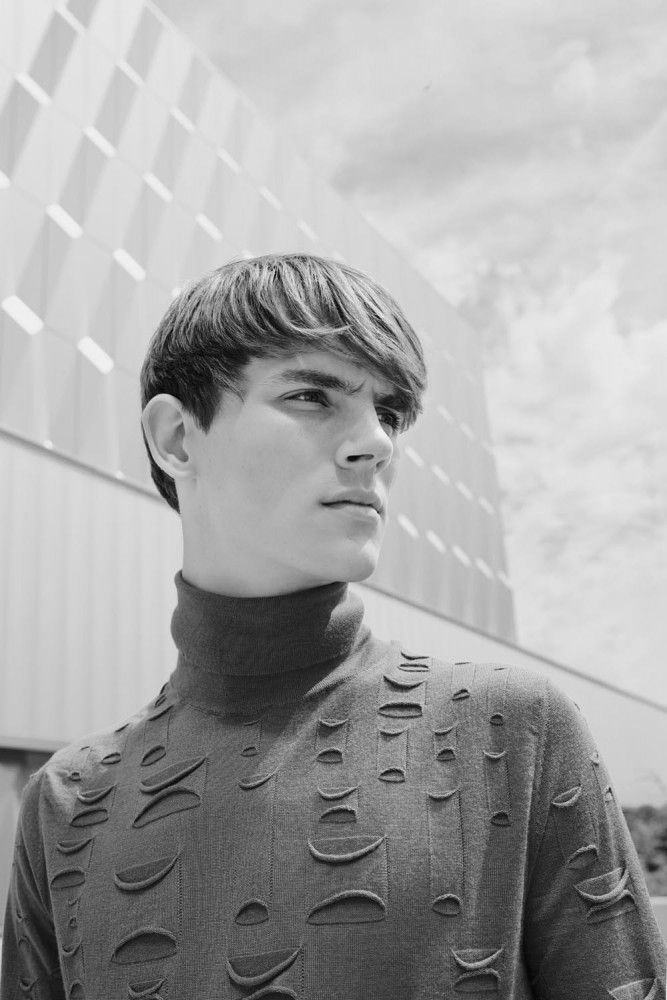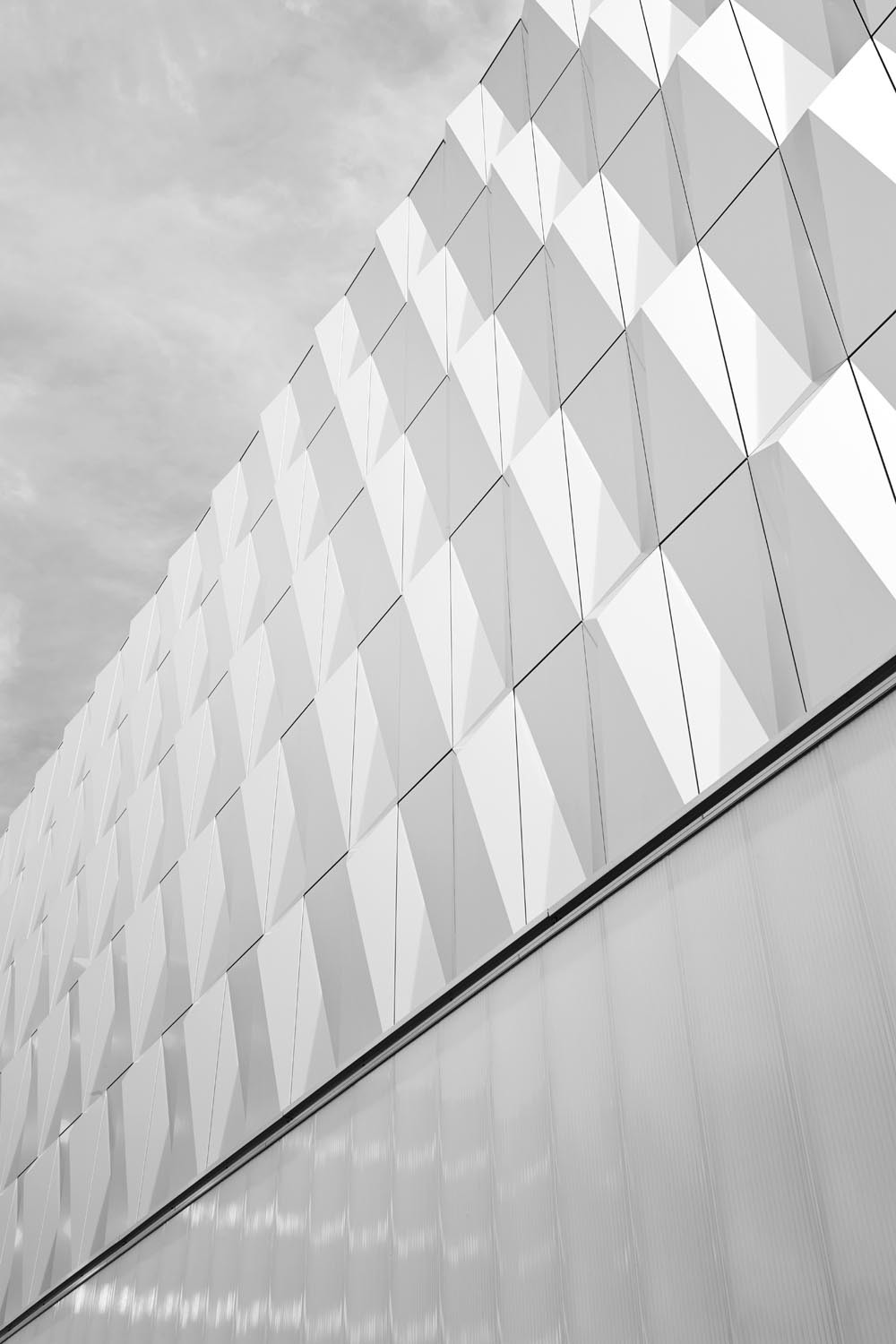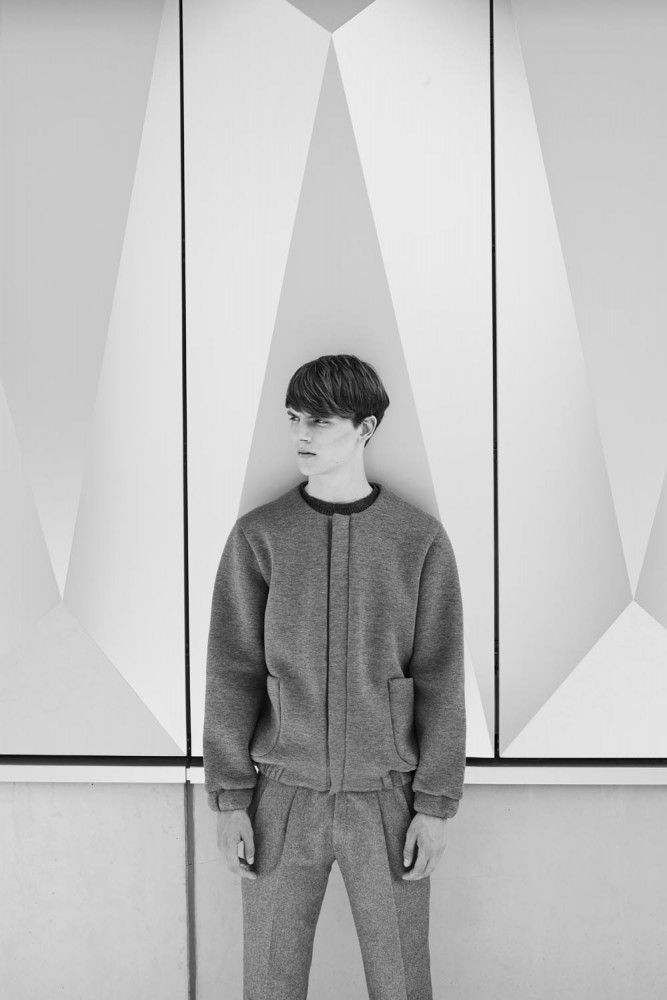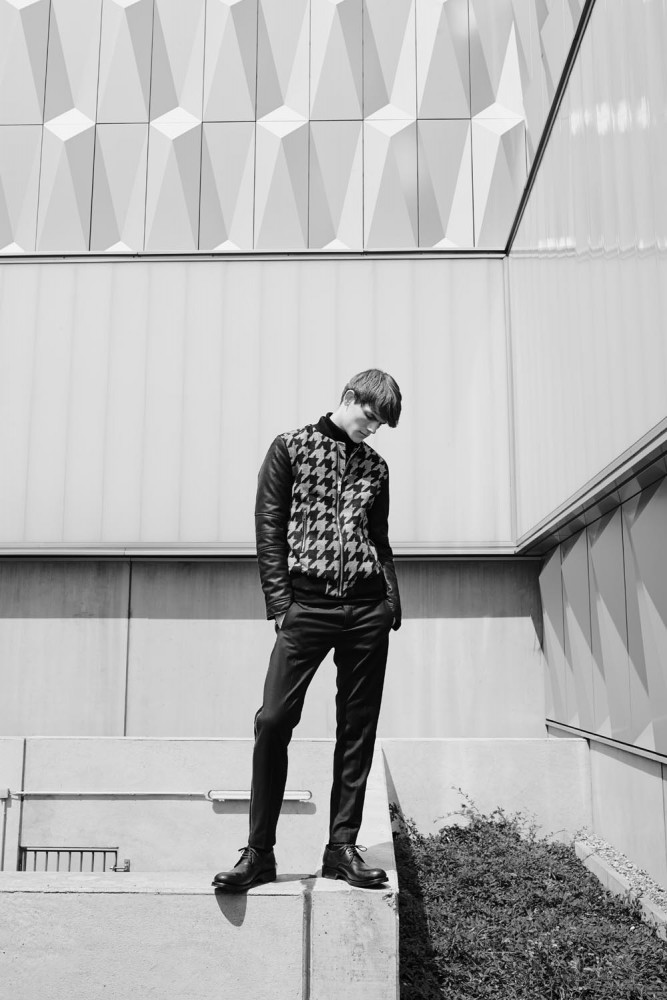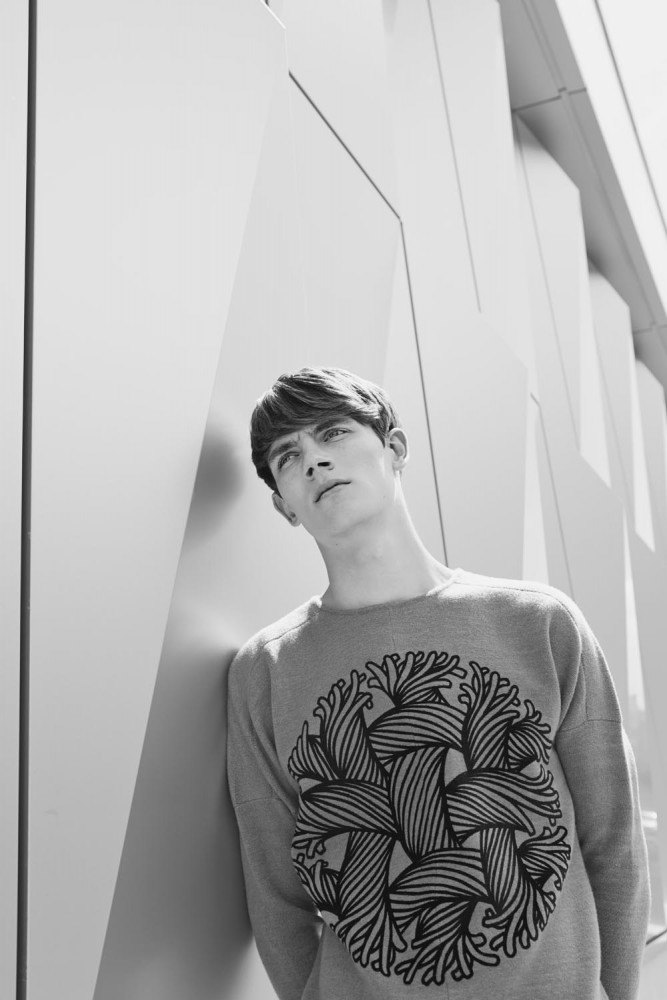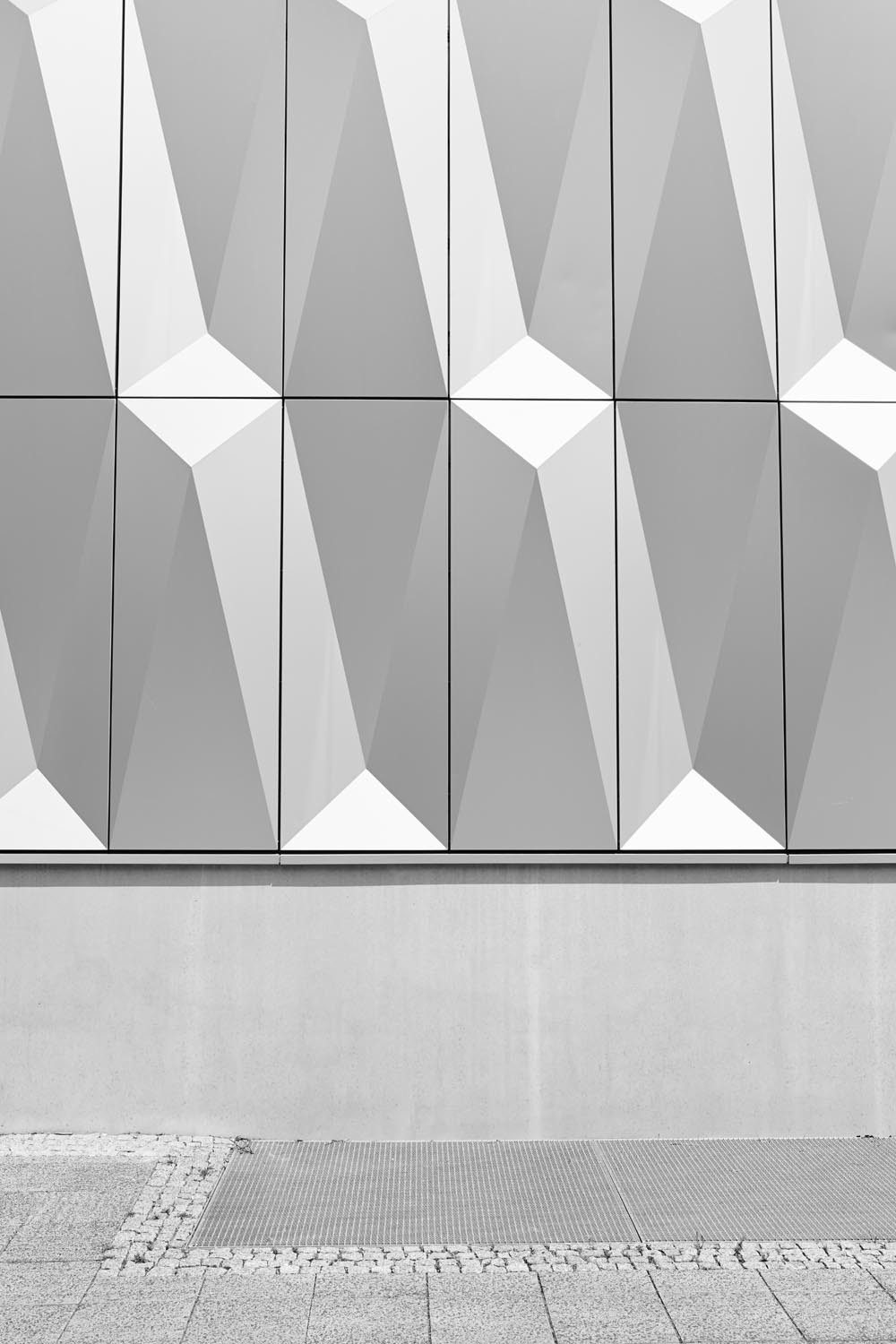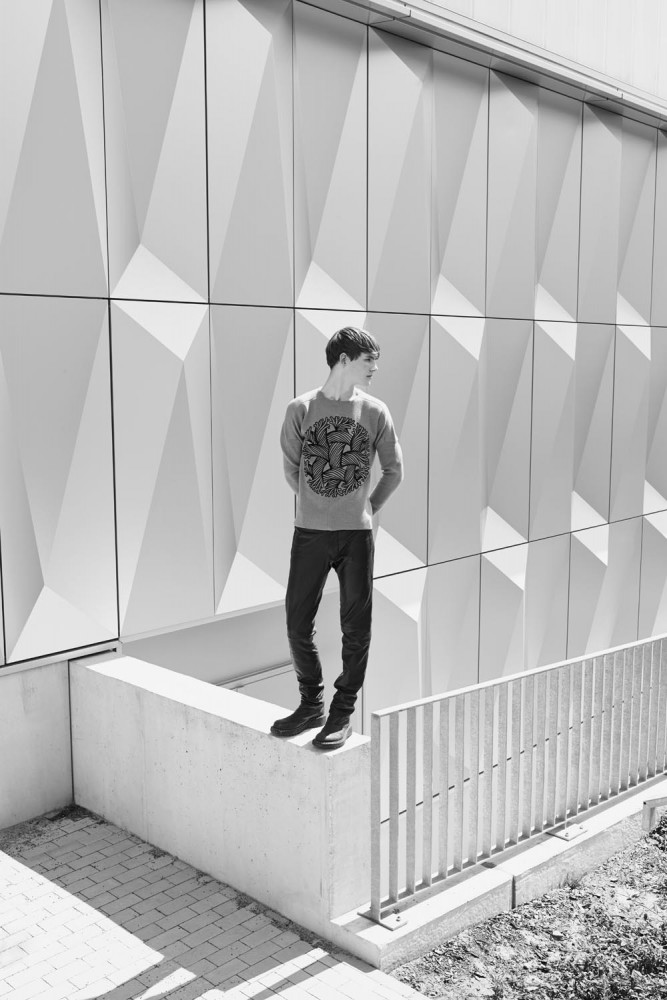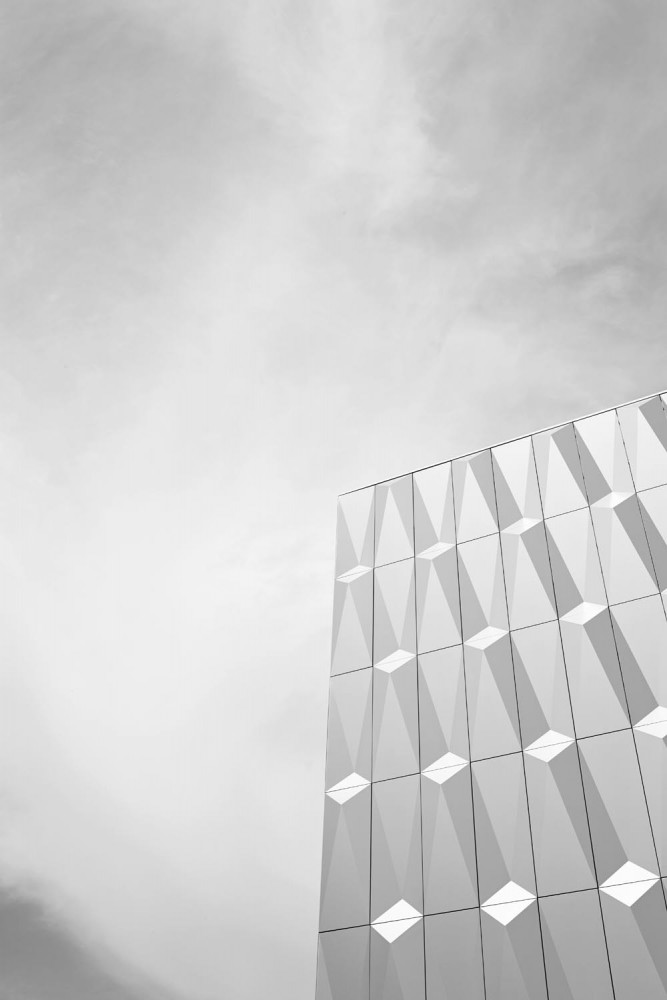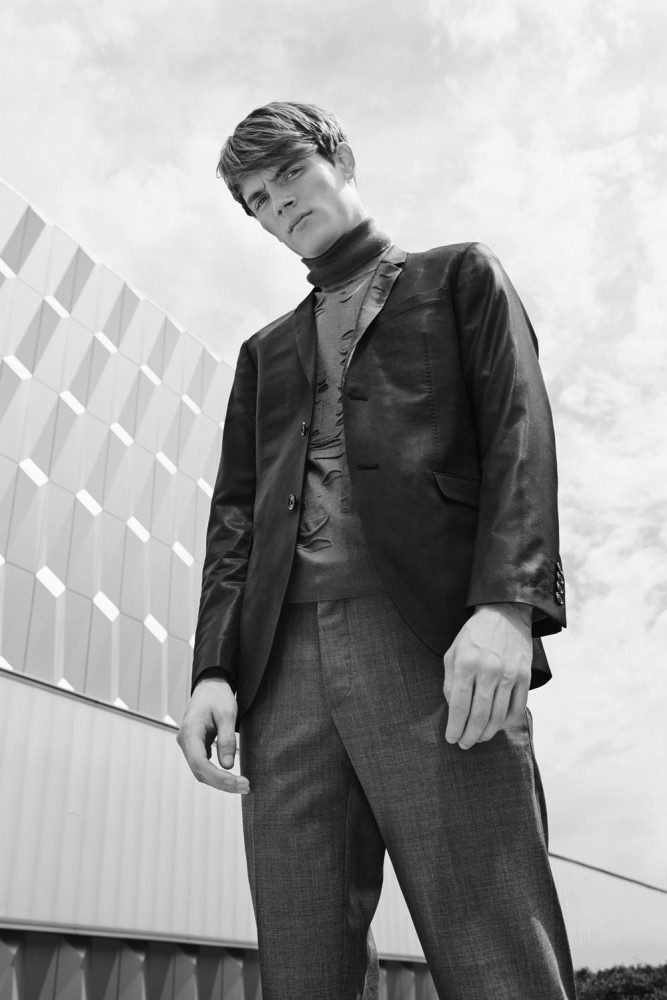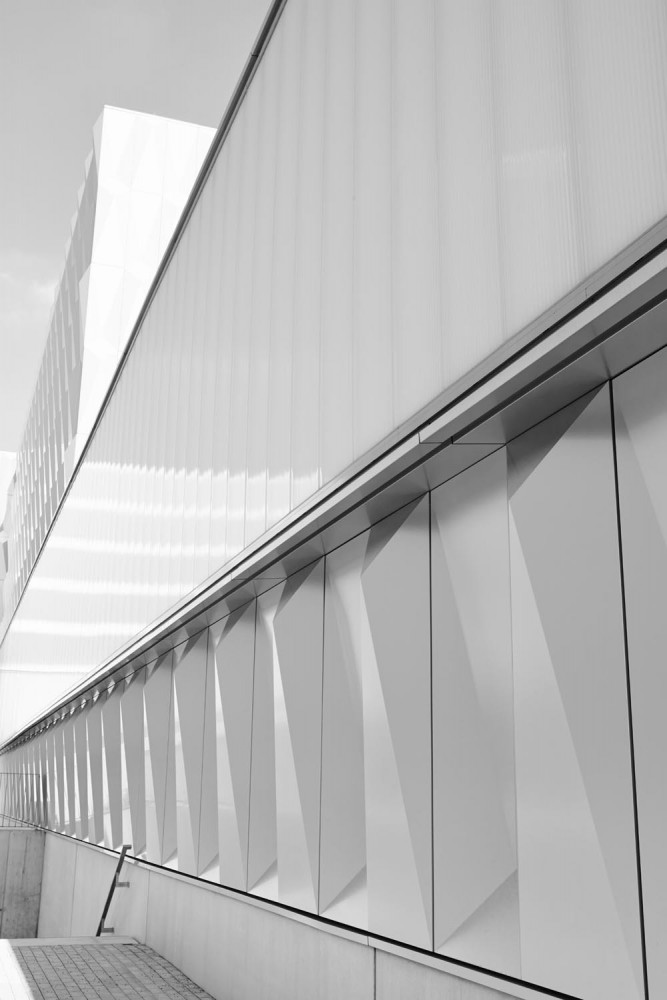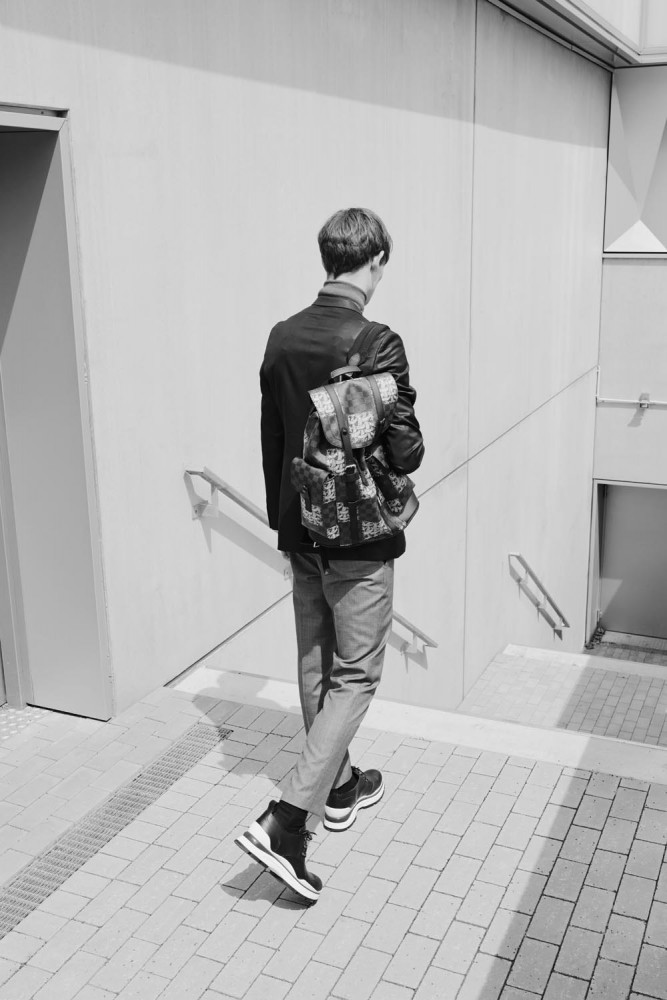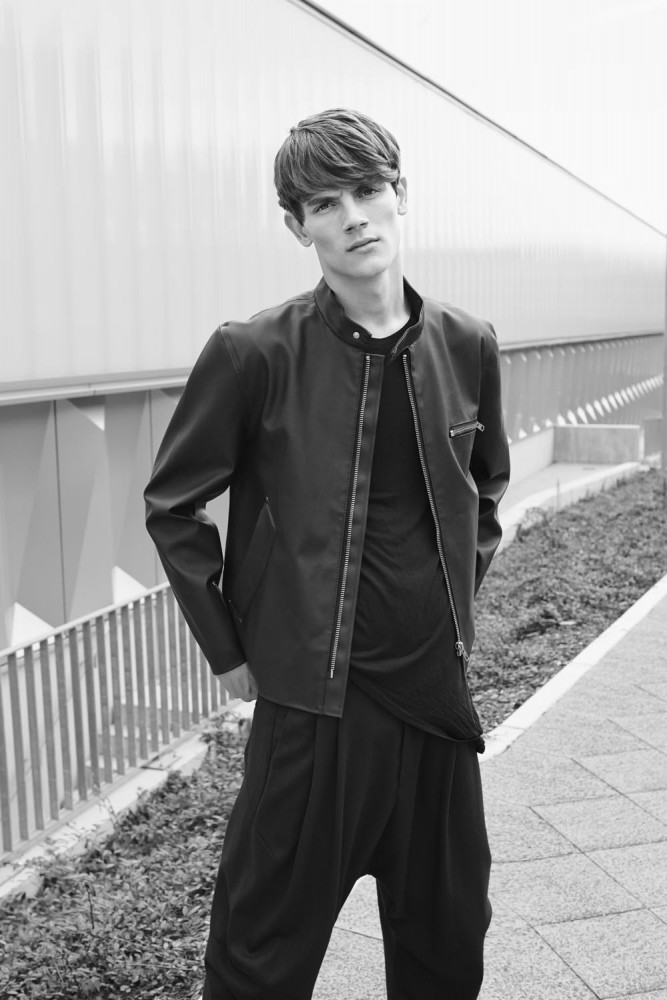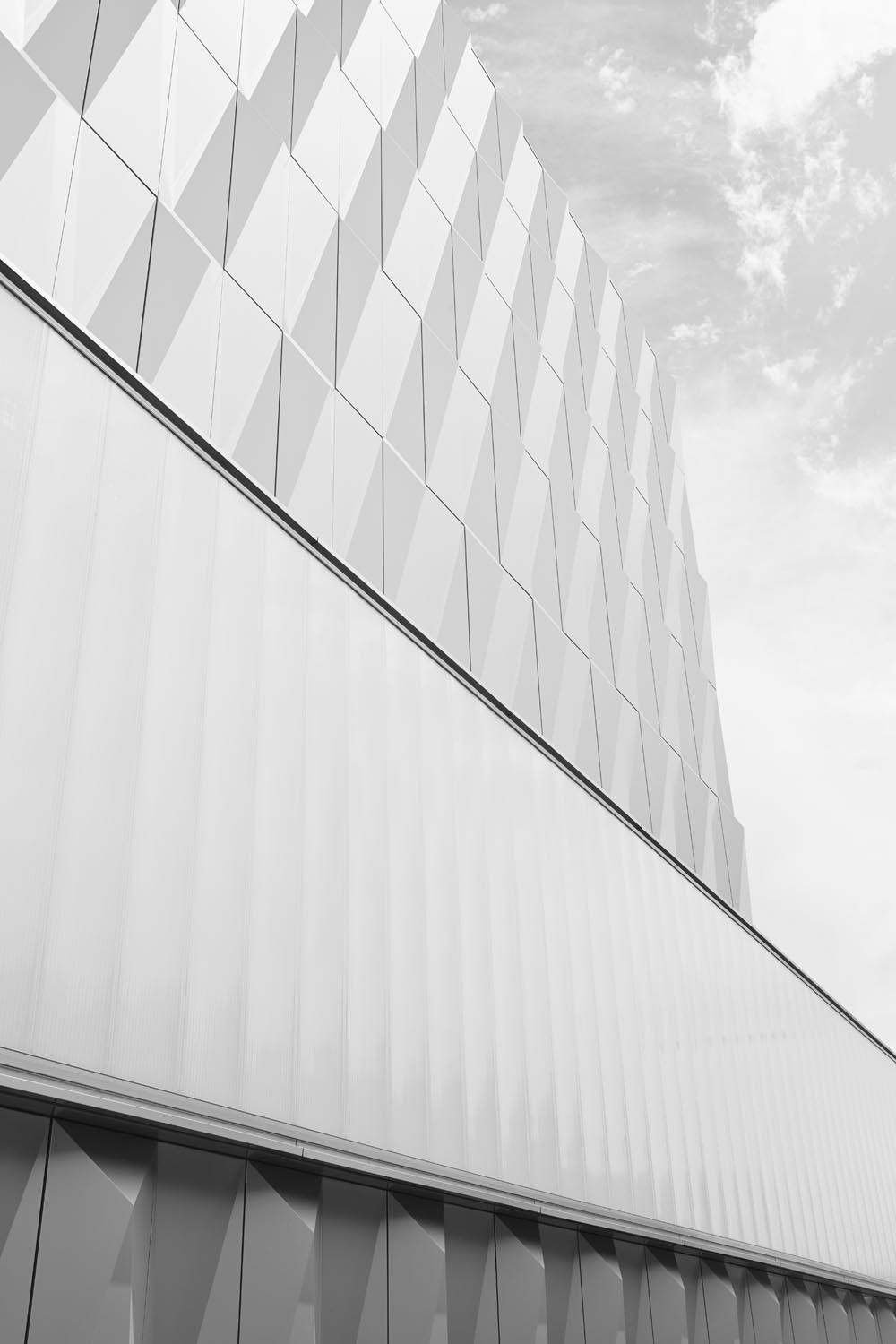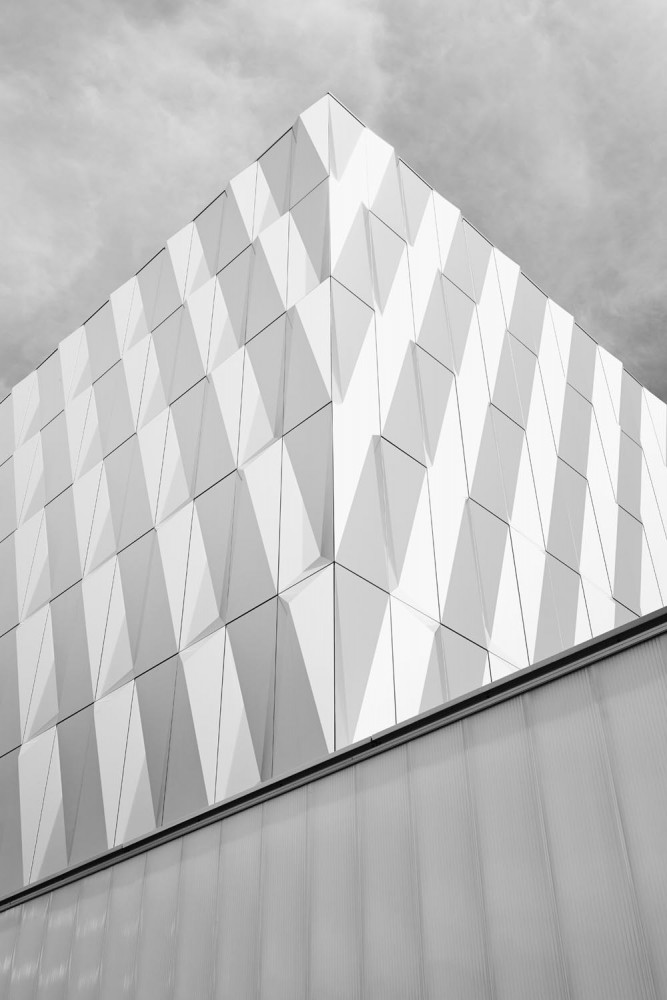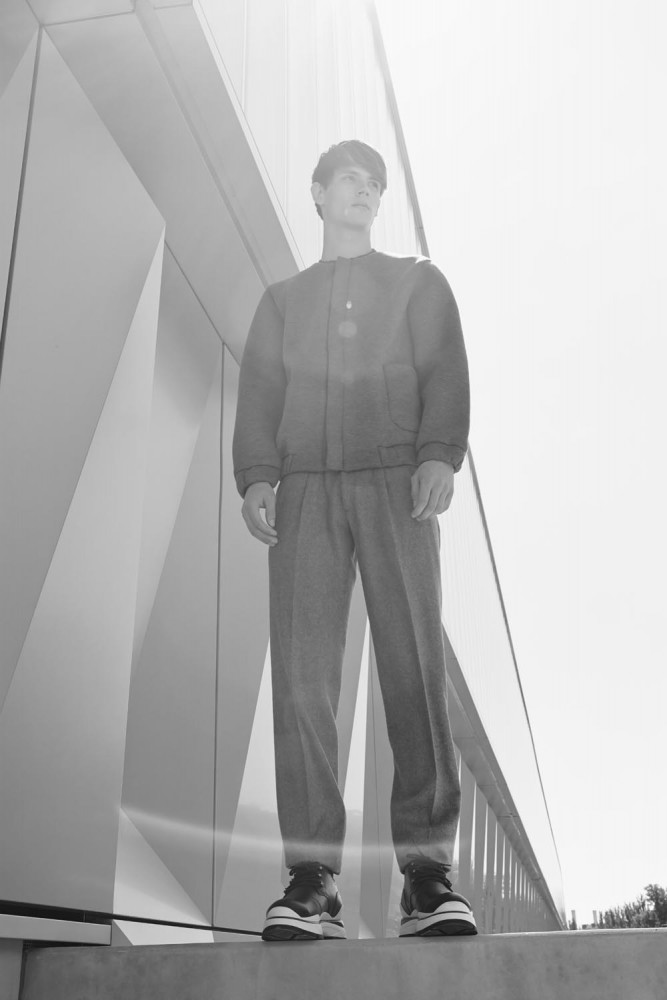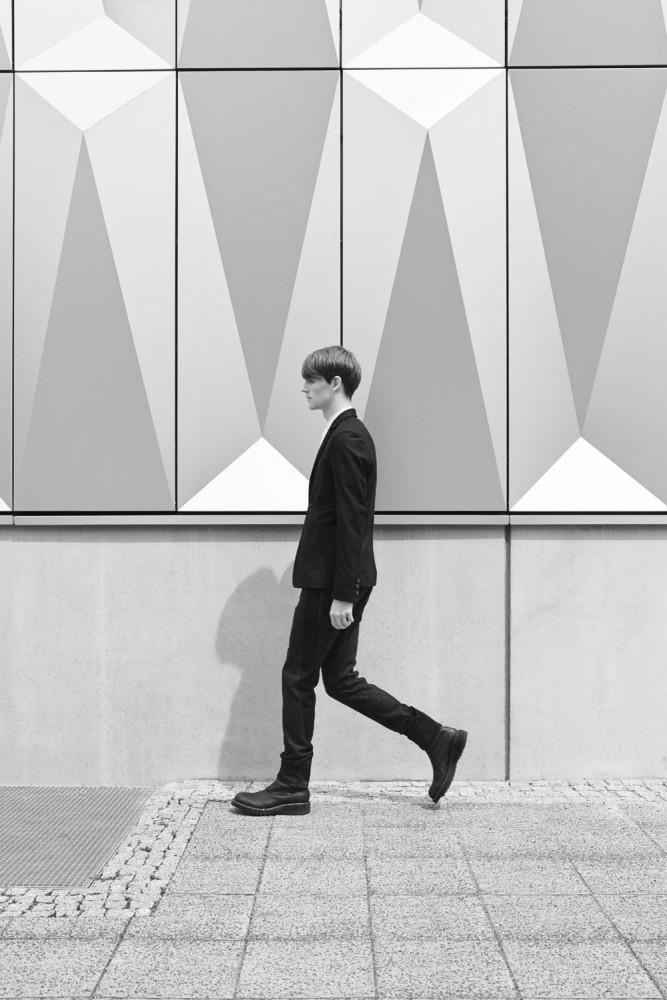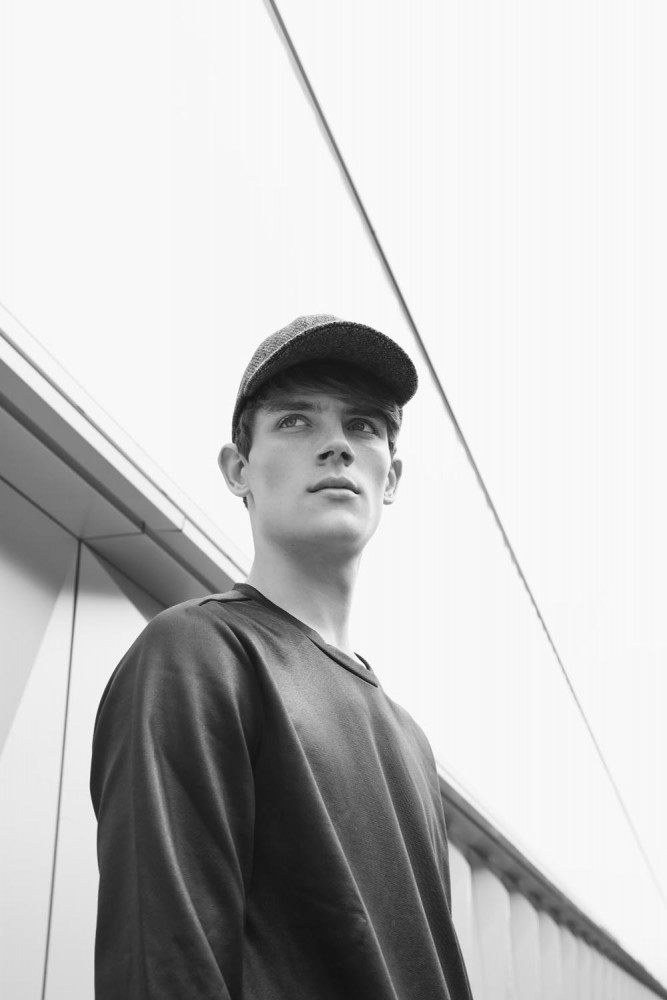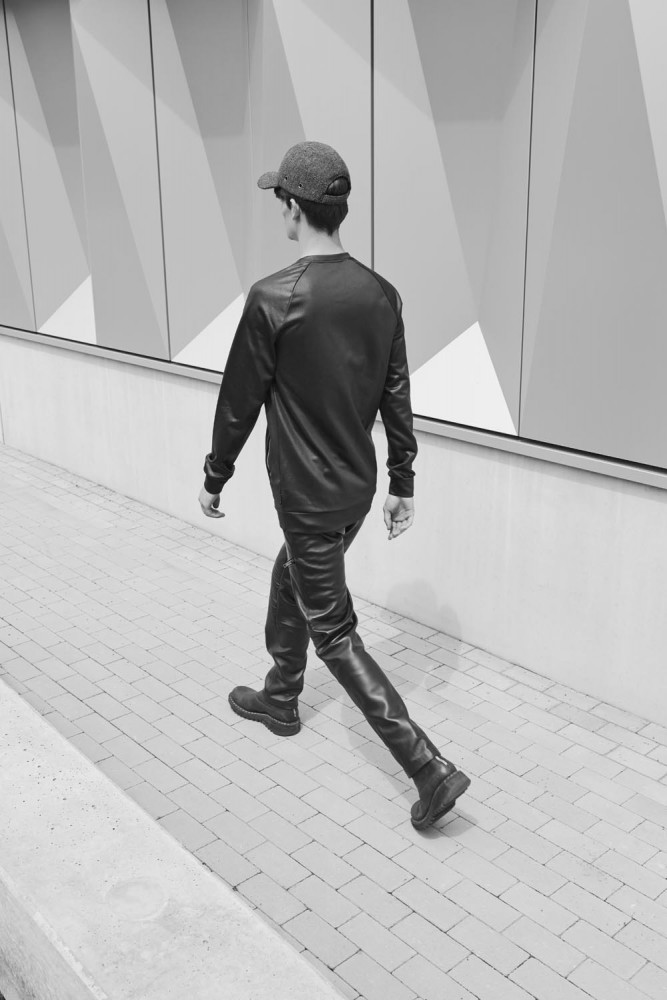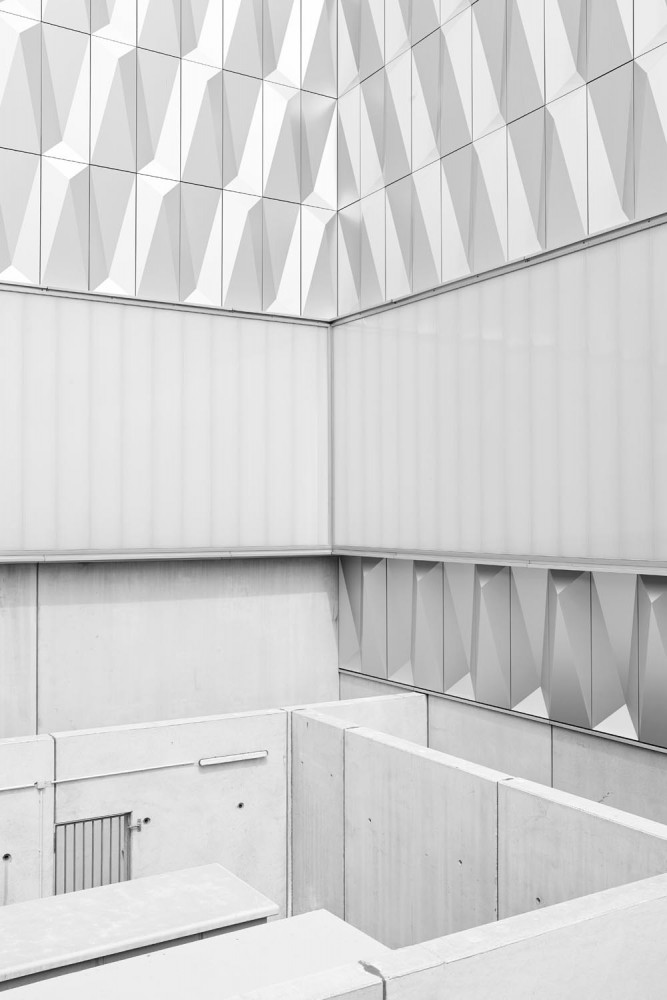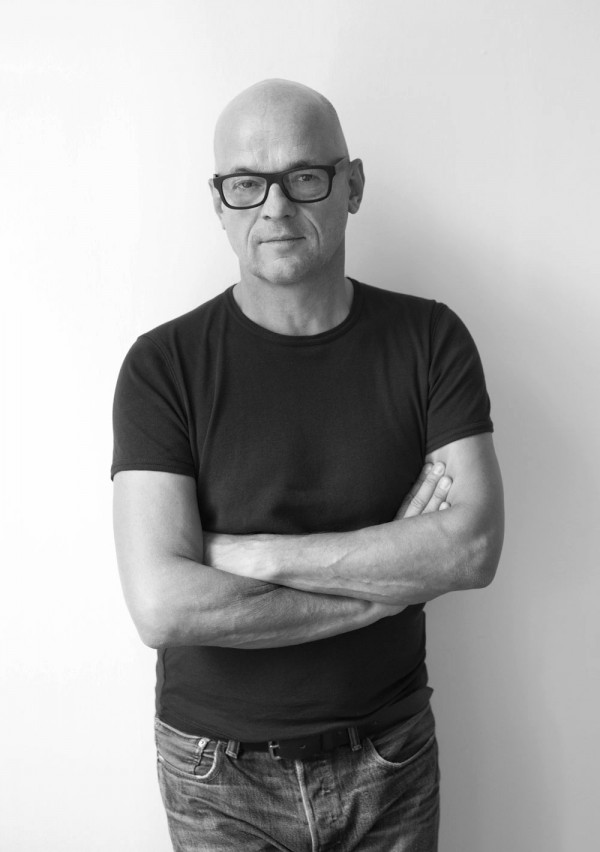In a masculine dialogue between fashion and architecture, Christoph Musiol transforms three-dimensional spaces into two-dimensional compositions. Working with labels such as Brioni, Dolce&Gabbana, Louis Vuitton, and Ermenegildo Zegna, stylist Bodo Ernle creates a fashionable counter pole.
S Magazine: You began studying art? Why did you get into the field of photography instead?
Christoph Musiol: At one point I was no longer interested in being an artist and doing art in a conventional way, and I discovered fashion photography, which was far more lively, fresher and more innovative. I was also thrilled by developing and realizing ideas within a team and with other creative people.
You have been doing photography for 15 years now. What, in your opinion, has changed in this timespan as a fashion photographer?
Well, digital photography has changed everything. Production time and costs have decreased dramatically, the styles are changing at a far faster rate, one experiments more and the product can, through digital media, be brought to a far bigger audience. Liberties and possibilities have multiplied, while it is far more difficult to define oneself before the background of other photographers.
Would you say that fashion photographers in Germany can be more creative there than, f.i. , in France?
I believe that each country has its own cultural specialities that cannot be compared as such. The german approach to fashion differs a lot from that in France and with it the whole approach to fashion photography. But I do think indeed that a fashion photographer will be able to develop himself better in Germany, since the structures here are not so unbendable and one can be more innovative.
You say that, over the time of your experience, you fare better with male models than with female ones. Where is the difference in that for you?
The main issue is that if you want to create a story with models you have to put yourself into different roles - and understand them at the same time. Since I am male myself, male models are easier for me to handle. To be honest, I do not even understand women and their wishes and yearnings…
What did you photograph for S Magazine? Can you describe what you did content-wise?
I tried to combine the photography of fashion and architecture in a way that both fields do charge and fuel each other - with the male model still being the focus.
You tend to use graphical or architectural elements. Why?
I love architecture and have a rather graphic eye. And I am quite prone in reducing three-dimensional spaces into two-dimensional compositions.
How would you describe your style?
That´s a difficult question, since I cannot step outside of myself to judge me, but I try to give the individual in my fashion photography his character and authenticity - this paired with a very direct and unpretentious approach to photography.
How do you realize the ideas and concepts of your shootings? Do you see yourself as a director? Do you rely on the different parts of your team or do you rather work with people you know and trust?
Basically I create the idea with my editors and stylists. Then the fitting styling, the location and the models are put together. I direct the shootings, but am still in an exchange with the team. I tend to work with artists I already know, but am open to new talents.
If you had the chance, what would you dream to do as a photographer?
Oh, there is quite a range of ideas! Fashion stories in great places with great architecture. A male fashion shoot in Brazilia in the shadow of Oscar Niemeyers buildings perhaps?
